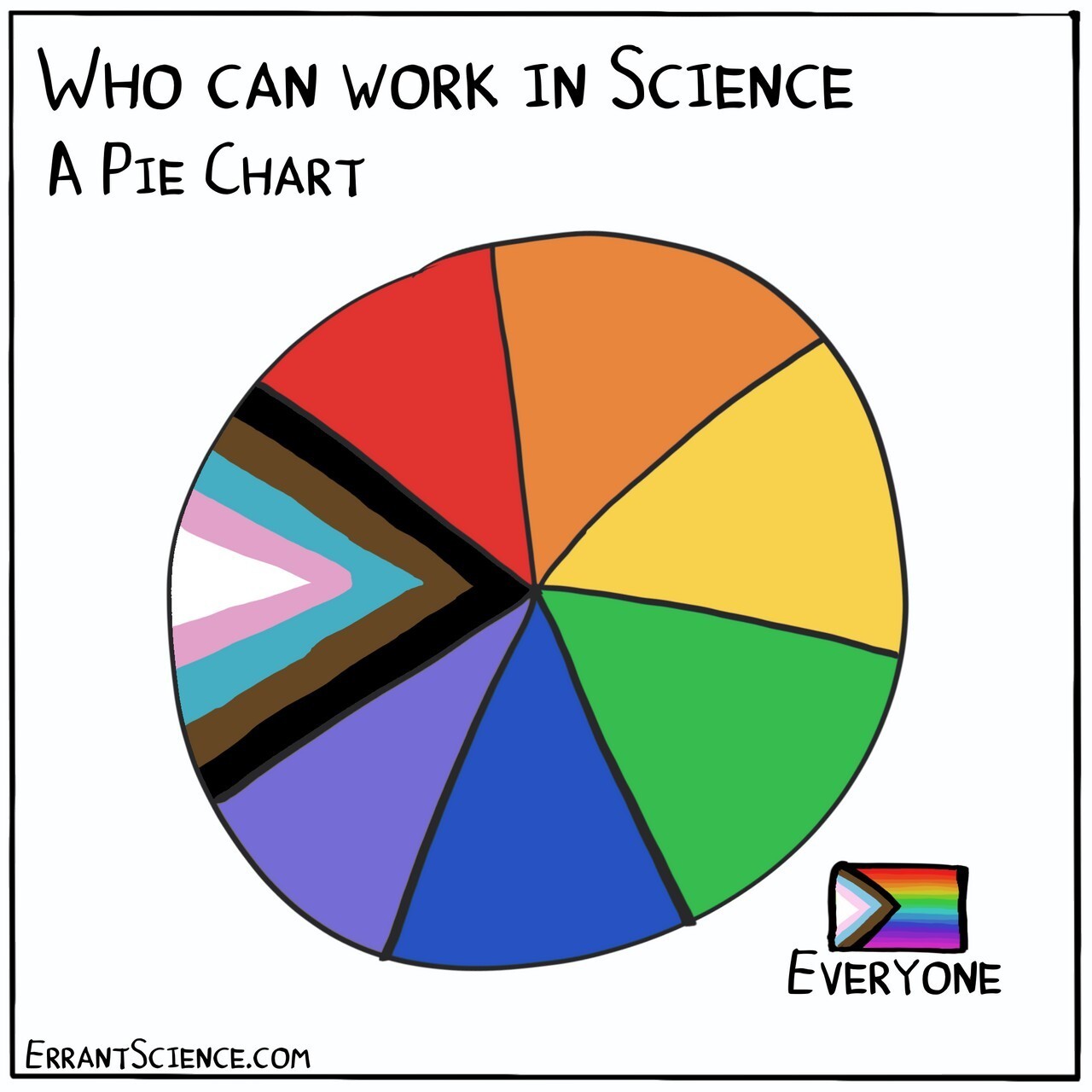This posts lists several resources regarding inclusion gaps in the scientific landscape.
Gender
Meta-Research: Systemic racial disparities in funding rates at the National Science Foundation
The gendered nature of independence in the context of research funding and excellence
The Glass Obstacle Course: Informal and Formal Barriers For Women Ph.D. Students in STEM Fields
The extent and drivers of gender imbalance in neuroscience reference lists
Papers authored by women are rated lower or have lower acceptance rates in academic journals (Fox et al. 2019; Hagan et al. 2020; Murray et al. 2018; Walker et al. 2015)
“Numerous studies have demonstrated that the use of standardized proxies of performance, such as journal ratings and impact factors, can reinforce existing gender inequalities in scientific organizations” (Brooks et al. 2014, Hunter et al. 2010, Nielsen et al. 2017 in Nielsen et al. 2018)
80.
18.43-fold more women and 13.34-fold more men receive more recognition with article-level metrics (Arabi et al. 2023)
Why the gender gap in physics has been stable for more than a century
The FEM/UM Citation Guide explains how women and other underrepresented groups can become more visible in science through citation practices
Balanced citer allow you to perform statistical analyses using Python to investigate the equality in gender and race of the first and last authors in your reference list.
Race
- Peer reviewers discriminate based on author race (Nakamura et al. 2021)
- Non-White scientists appear on fewer editorial boards, spend more time under review, and receive fewer citations (Liu et al. 2023)
- Black women in particular are affected by citation erasure (Smith 2021)
Language
Articles submitted to journals by authors from countries with low English proficiency fare worse during peer review than those with high English proficiency (Burns & Fox 2017; Ross et al. 2006; Saposnik et al. 2014; Tregenza 2002; Walker et al. 2015 - from Fox et al. 2022)
Journals are less likely to accept papers by researchers in countries where English is not a primary language [25–27].
25. Primack RB, Marrs R. Bias in the review process. Biol Conserv. 2008; 141(12):2919–2920. https://doi.org/10.1016/j.biocon.2008.09.016
26. Primack RB, Zipf L. Acceptance rates and number of papers in Biological Conservation from 2005 to 2014 for Australia, Brazil, China, India, Spain, and the United States: Trends or noise? Biol Conserv. 2016; 196:50–52. https://doi.org/10.1016/j.biocon.2016.01.016
27. Smith OM, Davis KL, Pizza RB, Waterman R, Dobson KC, Foster B, et al. Peer review perpetuates barriers for historically excluded groups. Nat Ecol Evol. 2023; 7:512–523. https://doi.org/10.1038/s41559-023-01999-w PMID: 36914773
Non-native English researchers need:
up to 91% more time to read a paper in English
up to 51% more time to write their own paper
Their papers will be rejected 2.6 times more often by journals
If accepted, they’ll have to revise it 12.5 more times
When they present in English (they will often avoid English speaking conferences and oral presentations), they need up to 94% more time to prepare their presentations.
Resources
From Fox et al. 2022:
Peer reviewers favour articles by authors from higher-income (Demarest et al. 2014; Harris, Macinko, et al. 2017; Harris, Marti, et al. 2017; Kowal et al. 2022; Saposnik et al. 2014)
or favour papers by authors that are from prestigious institutions (Blank 1991; Tomkins et al. 2017),
or with prestigious reputations (Huber et al. 2022; Okike et al. 2016),
favouring authors that are senior (Pleskac et al. 2021),
or disfavouring newcomers to a discipline (Seeber & Bacchelli 2017).
open by default, and equitable by design - Heather Joseph
Resources to improve inclusion
- Disrupting Racism and Global Exclusion in Academic Publishing: Recommendations and Resources for Authors, Reviewers, and Editors (Ledgerwood et al. 2023)
- A new tool for evaluating health equity in academic journals; the Diversity Factor
More information
- Labor advantages drive the greater productivity of faculty at elite universities
- List of references regarding diversity, biases, and inclusivity studies and opinion pieces
- Systemic racism in science: Reactions matter
- Multilingual Data Science: Ten Tips to Translate Science and Tech Content
- Open Grant Reviewers - Strategies to mitigate bias for grant reviewers
- Why Diverse Teams Outperform Homogeneous Teams
- Knowledge Equity Network
- Diversity, Equity and Inclusion (DEI) metrics: Breaking barriers in Open Source
- GitLab Hiring initiatives
- An SPSP-Sponsored Video Conversation on the Importance of Inclusive Citing
- Being non-WEIRD in WEIRD Academia
- Many Diversity, Equity, and Inclusion strategies and plans fail
- A quick guide to data collection for LGBTQ+ characteristics
- Making your journal an inclusive home for authors and readers from the Global South
- Inequities in Authorship
- Labor advantages drive the greater productivity of faculty at elite universities
- List of references regarding diversity, biases, and inclusivity studies and opinion pieces
- FAIR enough? Building DH Resources in an Unequal World
- A Resource to Support Decolonization of the Undergraduate Chemistry Curriculum
- Not the Only One
